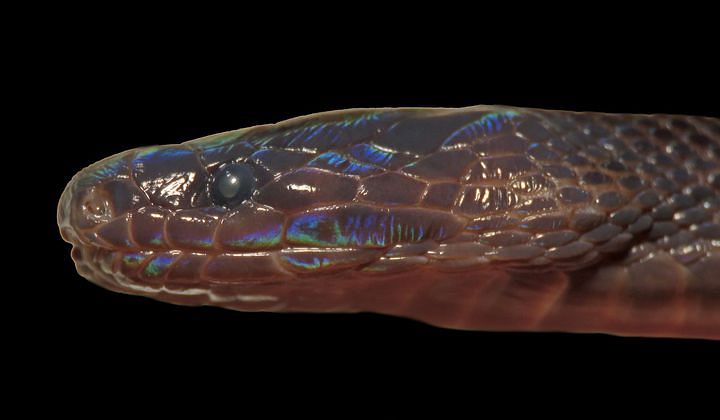A new report from the World Wide Fund for Nature (WWF) highlights just how biodiverse the Greater Mekong region remains, even as major threats continue to impact flora and fauna populations.
The report, titled "New Species Discoveries in the Greater Mekong 2020," was shared with Saigoneer prior to publication. It condenses data from the five Greater Mekong nations: Myanmar, Laos, Thailand, Cambodia and Vietnam.
In total, 224 new species of vascular plants and vertebrate animals were confirmed across these countries in 2020, with Vietnam accounting for 91 discoveries, the most of the five. This includes 85 endemic species, meaning they have not been found anywhere else yet.
The authors note that the Greater Mekong is still "a frontline for scientific exploration and a hotspot of species diversity. However, these discoveries also are a stark reminder of what we stand to lose if human settlement and development activities in the region continue to destroy the natural environment."

Kurixalus gracilloides, or the gracile frilled tree frong. Photo by Nguyen Van Tan.
Mia Signs, Outreach and Advocacy Manager at WWF-Greater Mekong, explains to Saigoneer that while these discoveries say little about current conservation policies, they highlight the importance of such regulations for the future.
"The species diversity per year of a place is largely determined by geology and evolutionary history of the past and intactness of natural ecosystems at present, but not by the current policies or management," she says. "However, they underline the need for management to respond to these discoveries and take greater responsibility for protection of habitats and allow persistence of these species."
The report highlights seven of the new discoveries in Vietnam, as well as the unexpected ways in which unique species can be confirmed. Take, for example, Artocarpus montanus, a tree in the mulberry family found in Kon Tum Province. Specimens of this tree were first collected by botanists over 70 years ago, but it had been mislabeled as a species only found on the Malay Peninsula.

Examples of Artocarpus montanus. Photos by Shuichiro Tagane.
Elliot Gardner, a researcher at the International Center for Tropical Botany at Florida International University, realized that a specimen in the Missouri Botanical Garden looked unusual for that label, and genomic analysis eventually determined that Artocarpus montanus was its own species.
We may often think of the discovery of new species taking place in remote forests, but according to Signs, archival research frequently leads to new finds: "Researchers also discover new species in specimen archives by trying new technologies to test plant and animal tissue that may have been misidentified in the past. This includes using new and more precise microscope equipment or DNA sequencing to determine how closely species are related to each other, leading to revisions of original classifications."
Other highlights include the gracile frilled tree frog, the crescent moon spadefoot frog, the Mount Ky Quan San horned frog and the long-snouted kukri snake, each of which had their own path to species confirmation.

Leptobrachium lunatum, or the crescent moon spadefoot frog. Photo by Jodi Rowley.

Megophrys frigida, or the Mount Ky Quan San horned frog. Photo by Benjamin Tapley.
Unfortunately, all of these discoveries face a challenging future through some combination of habitat destruction, disease, predation, hunting, pollution and climate change, though Signs notes that poaching is a particularly keen threat in the Greater Mekong.
"Poaching for local consumption or to feed the international wildlife trade is a major cause of species declines, and therefore an impediment to finding new species," she shares. "Loss of key species, especially top predators, disrupts the ecological balance of ecosystems, which threatens the survival of other species. This region is the 'perfect storm' for wildlife trade — it is the source, transit route and final destination for many of the world's most valuable and threatened species."

Oligodon rostralis, or long-snouted kukri snake. Photos by Linh Hoang Nguyen.
And there is much to be discovered: according to Signs, only about 15% of the species estimated to live on Earth have actually been described, which is incredible given all of the scientific and technological advancements of the last century. This means there is an awful lot left to lose, but hopefully raising awareness of new finds can help convince people of the importance of preserving what we already have.















